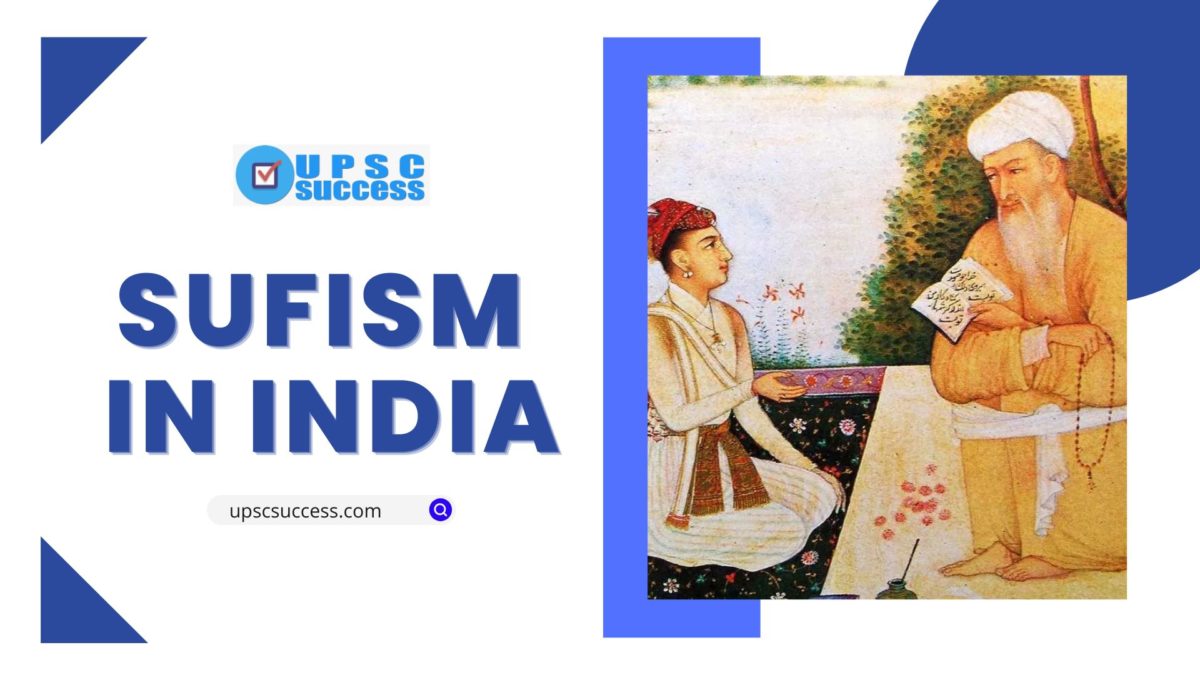Contents
Sufism was a liberal reform movement within Islam. It had its origin in Persia and spread into India in the 11th century. Most of the Sufis (mystics) were persons of deep devotion who disliked the display of wealth and degeneration of morals following the establishment of the Islamic empire.
- The word ‘sufi’ is derived from ‘suf’, which means wool in Arabic, it also means ‘purity’,
- Sufism or mysticism emerged in the 8th century,
- The early known Sufis were Rabia al-Adawiya, Al-Junaid, and Bayazid Bastami.
- Well-developed movement by the end of the 11th century.
- Al Hujwiri, is regarded as the oldest Sufi in the sub-continent.
- By the 12th century, the Sufis were organised in Silsilahs
Chisti Order
- Established in India by Khwaja Muinuddin Chishti,
- He moved to India after the invasion of Muhammad Ghori, and settled in Ajmer around c.1206 CE
- His dargah reached unprecedented heights after the support of Mughal Emperor Akbar.
- The Chisti presence in Delhi was established by Qutbuddin Bakhtiyar Kaki (the Qutub Minar is named after him)
- Another sufi saint was Nizamuddin Auliya, who lived in the 14th century
Suhrawardi Silsilah
- The Silsilah was founded by Shihabuddin Suhrawardi in Baghdad
- It was established in India by Bahauddin Zakariya.
Naqshbandi Silsilah
- This order was established in India by Khwaja Bahauddin Naqshbandi
- Propagated by his successors, Sheikh Baqi Billah and Shaikh Ahmad Sirhindi
Qadri Silsilah
- The Quadiriyya Silsilah, was popular in Punjab
- Started during the Mughal rule under the teachings of Sheikh Abdul Qadir and his sons, Shaikh Niamtullah, Mukhdum Muhammad Jilani, and Miyan Mir, who had enrolled the Mughal princess Jahanara and her brother Dara as disciples.
- Another prominent pir was Shah Badakhshani.
Importance of Sufism in India
Sufism in India has a history of over 1000 years. Muslims that arrived or resided in this country can be divided into two camps. There were the extremely religious teachers called ulemas and the fakirs who are known as Sufis today. The fakirs were generally tolerant of other religions and even had non-Islamic followers in some cases.
The main reason behind the early popularity of Sufism in India was the Khanqahs. Khanqahs were large gathering halls where followers lived with their gurus or teachers. The gathering halls also acted as community centres and were open to everyone, specifically providing support and sustenance to poor people. They also became known as a centre for spiritual learning which helped in further enhancing their popularity. As Sufis played an important role in the intellectual development of India their contributions in the field of religion and society are immense.
The Sufis also abstained from religious and communal conflicts and reached out even to the poor and marginalised communities.
FAQs
Khwaja Moinuddin Chishti, a disciple of Khwaja Usman Harooni, the propounder of this order, introduced it in India. He came to India from Afghanistan with the army of Shihab-ud-Din Ghuri in 1192 AD and started living permanently in Ajmer from 1195.
Sufism, mystical Islamic belief and practice in which Muslims seek to find the truth of divine love and knowledge through direct personal experience of God.
The four main Sufi orders – Chisti, Qadiriyya, Suhrawardiyya and Naqshbandi order were practiced in India.

